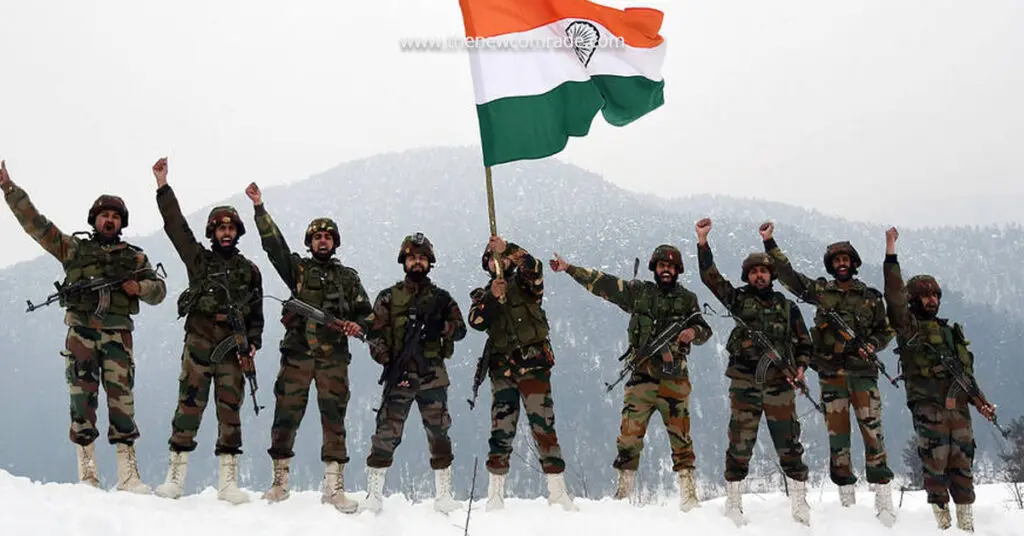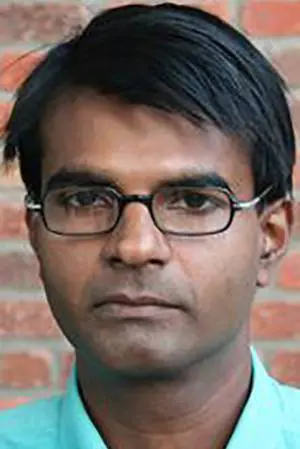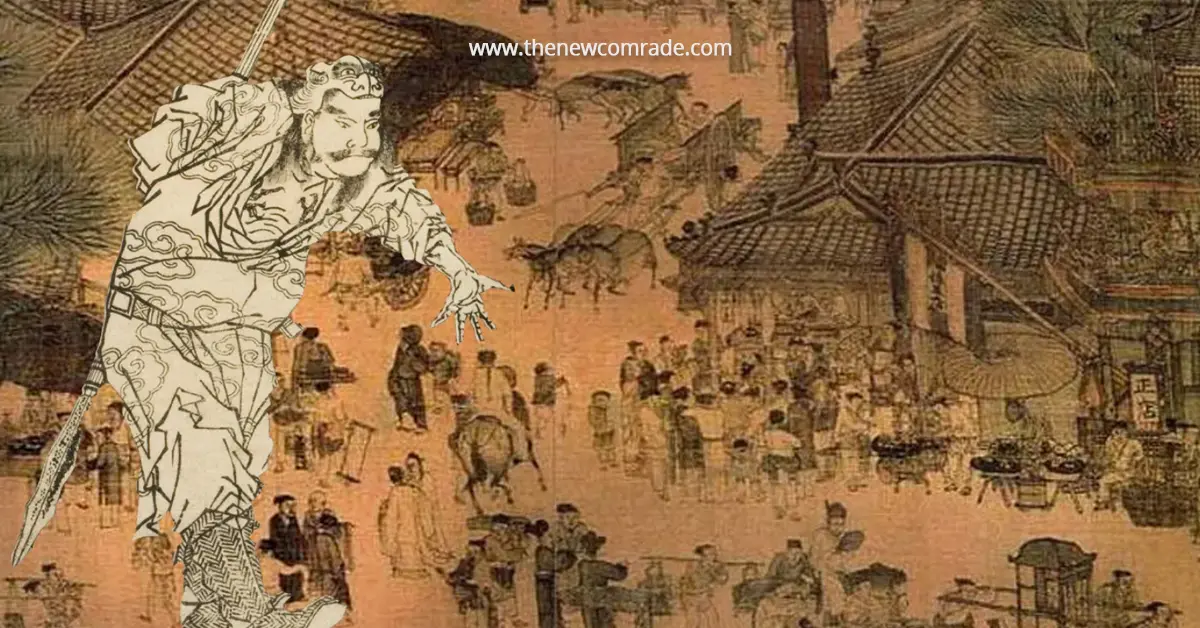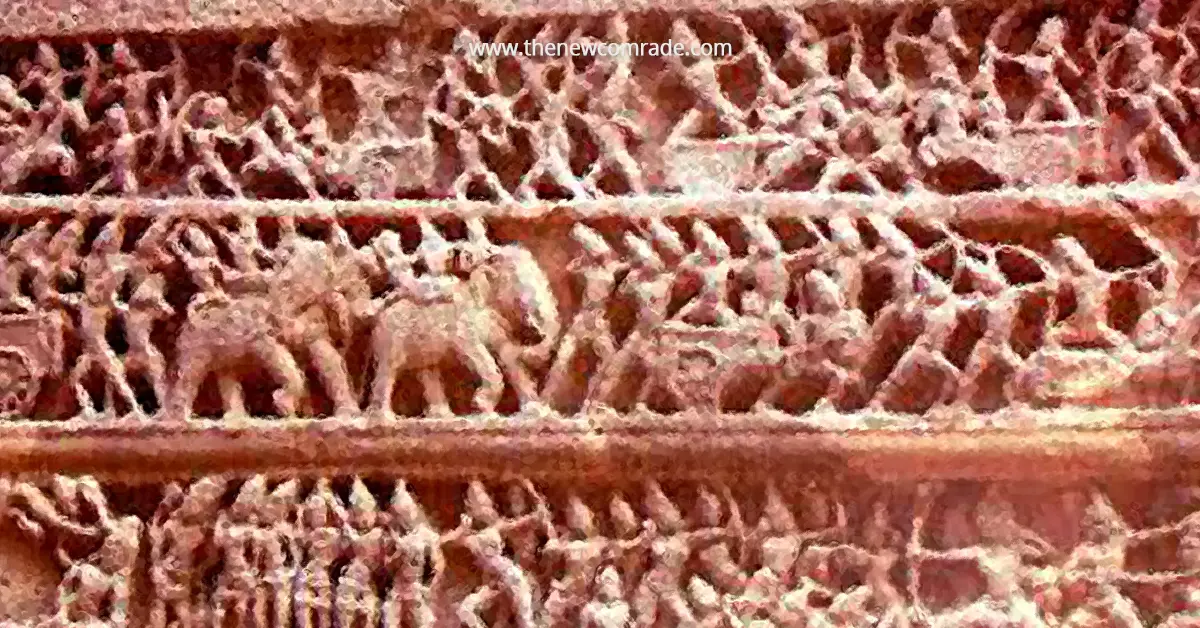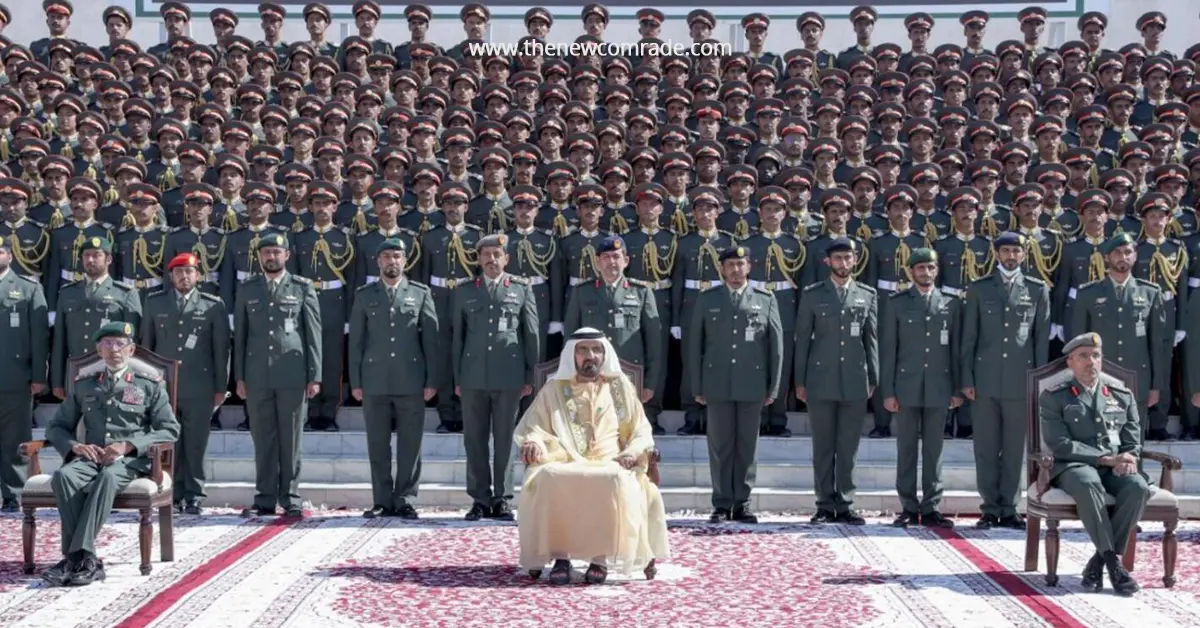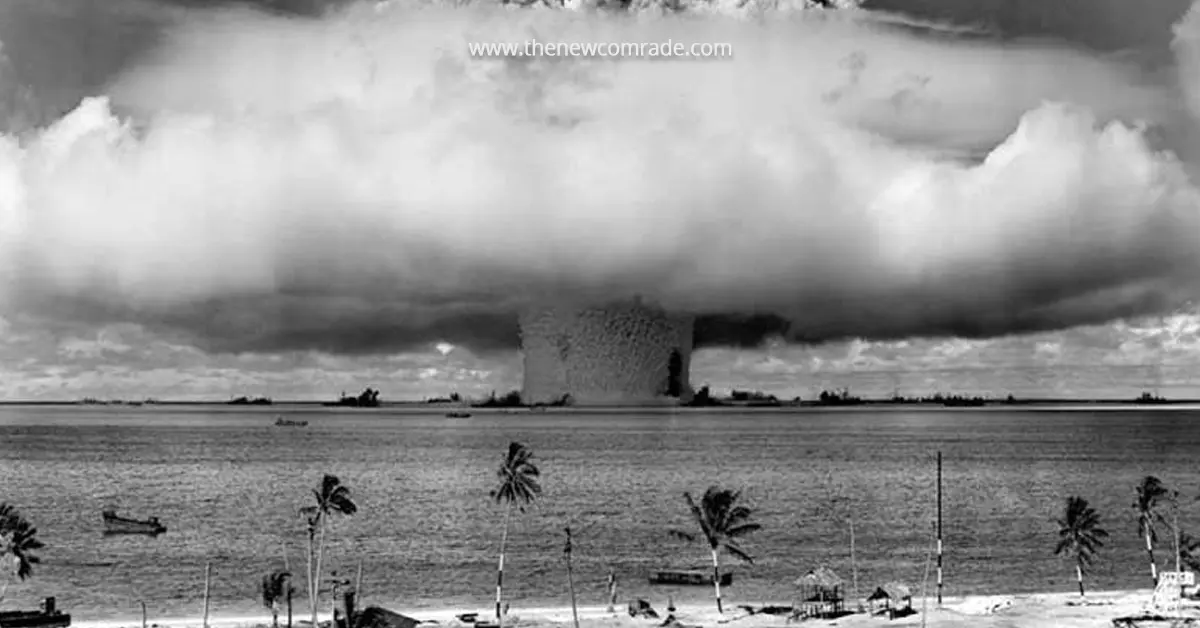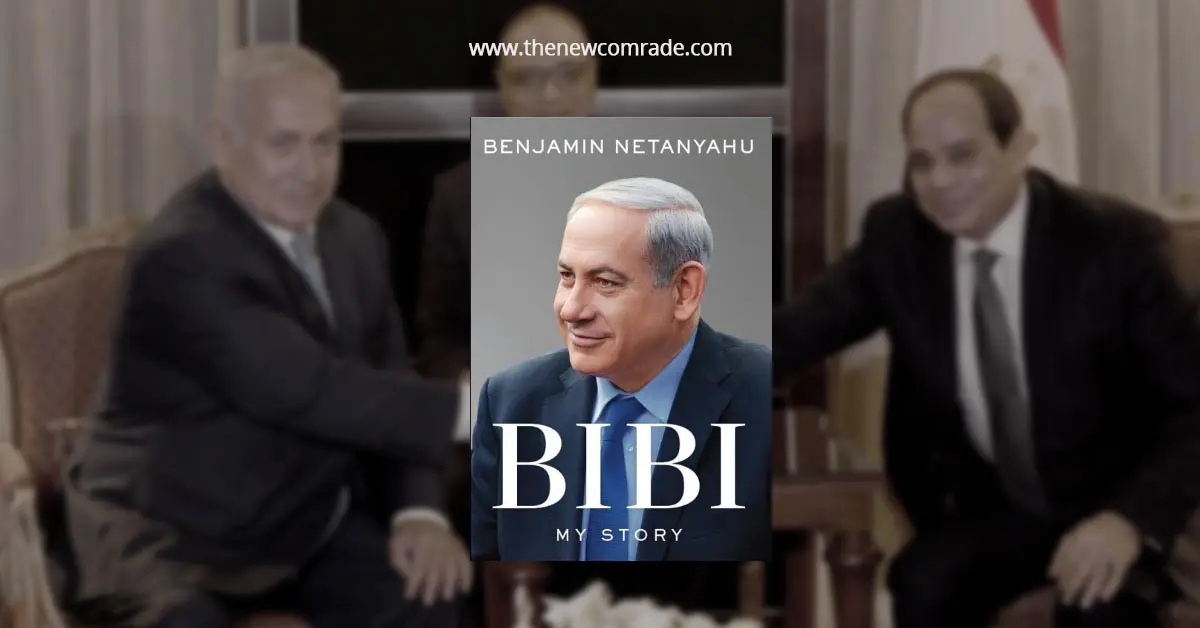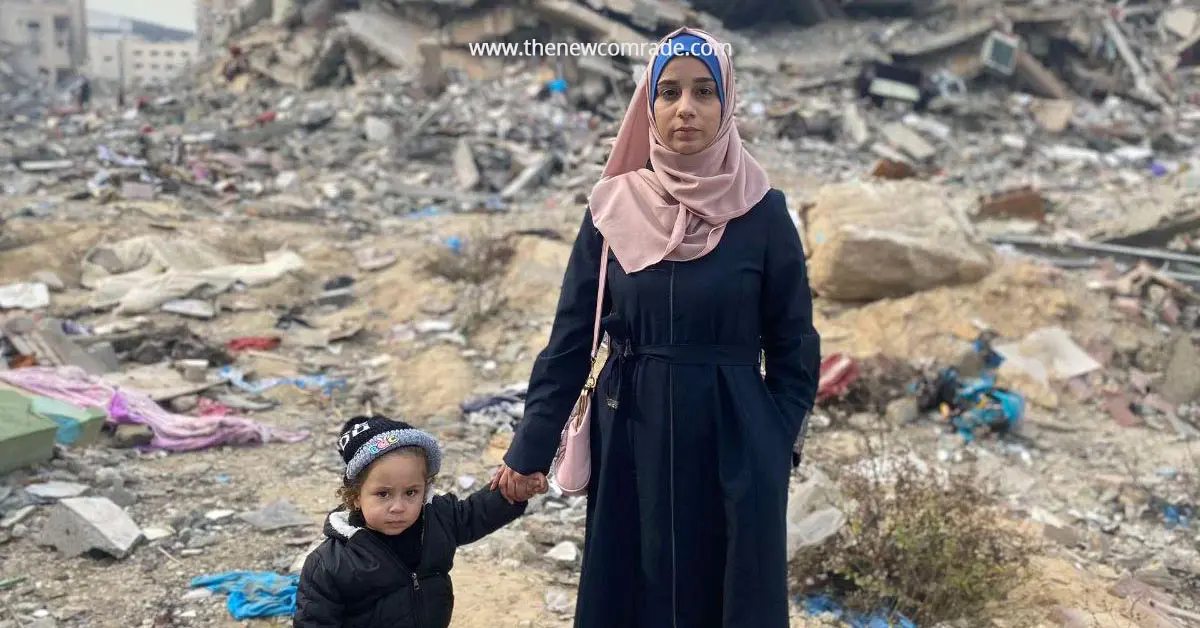Post-Colonial India’s Conduct of Unconventional Warfare
The late twentieth century was characterized by the proliferation of unconventional warfare. The latter term refers to intra-state rather than inter-state war. In recent times, the term ‘insurgency’ has connoted an organized movement aimed at the overthrow of a constituted government through the use of subversion and armed conflict.46 Lieutenant Colonel Vivek Chadha of the Indian army makes a distinction between terrorism and insurgency. In his framework, terrorist movements are based in urban areas, whereas insurgencies establish their bases in rural areas and then graduate to urban regions.47 Chadha’s definition is some-what similar to James D. Fearon and David D. Laitin’s view. They write: ‘Insurgency is a technology of military conflict characterized by small, lightly armed bands practicing guerrilla warfare from rural base areas.’48 Insurgency includes both guerrilla warfare and terrorism. Insurgency and responses to it by the polity concerned (known as counter-insurgency or COIN) together constitute unconventional warfare. A high level of insurgency and COIN in a country create a civil war.
A group of Western scholars argue that civil wars occur more frequently in countries with substantial populations belonging to different ethnic, linguistic and religious groups.49 India has eighteen officially recognized languages, twelve ethnic groups and seven religious groups that are further subdivided into various sects, castes and sub-castes.50 Somewhat like Stephen Peter Rosen, Jaswant Singh notes that the culture of divisive politics within India prevents the state from the generating surplus military power needed for power projection outside the country. Jaswant Singh writes that India’s strategic culture has become internalized, fixated upon curbing dissent within the subcontinent rather than combating external dangers, and has thereby created a yawning chasm of mutual suspicion between the state and the citizen. This in turn has prevented India from developing its true power, that is, its capability to project power beyond the boundaries of India.51 In a similar vein, Sardeshpande claims that geographic compartmentalization within South Asia has resulted in political fragmentation despite cultural unity. The net result has been a long tradition of intense internecine warfare within South Asia.52
Tanham notes that Kautilya long ago warned against the intrigues of foreign kings as a threat to one’s own security, even though the Arthasastra accepted intrigue and the use of internal spies as legitimate self-defense measures. The Indians suffer from a pervasive fear of ‘foreign hands’ at work among India’s unstable neighbors and within India.53 In Kautilya’s format, the principal threat to the rashtra encompassing the whole subcontinent comes from kopa. This is also the view of various Indian military officers.54 Like Kautilya, Chadha writes that with external support, an ongoing insurgency can escalate into a regular war between the states.55 The Pakistani army and especially the Inter-Services Intelligence (ISI) have been supporting insurgents since the mid-1980s with money, equipment and training. The objective is to exhaust India by giving a ‘thousand cuts’ with the aid of the insurgents.56 Pakistan’s strategy is to give moral and material assistance to groups like Hizb-ul-Mujahidin, which aim at the secession of Kashmir from India through armed struggle and then merger with Pakistan.57 The transnational connection is also apparent in Kashmir’s case. Al-Qaeda connects sub-national organizations with a trans-national network.58 Osama Bin Laden declared a jihad in Kashmir in 1989 and extended support to the Harkat-ul-Mujahideen, Harkat-ul-Jihad-Islami, Harkat-ul-Ansar, Lashkar-e-Toiba and Jaish-e-Mohammed tanzeems (militant outfits).59 In 1989, about 400,000 personnel (from the Indian army and the various paramilitary forces) were deployed in Kashmir.60
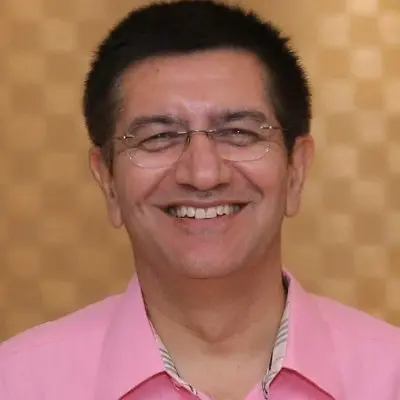
The most serious insurgency that India has to face is the Islamic insurgency in Kashmir. Monica Duffy Toft claims that the proportion of civil wars in which religion has become a central issue has increased over time. Further, religious civil wars are much more destructive than wars fought over other issues. Toft goes on to say that religious civil wars last longer and result in more combatant and especially non-combatant deaths, because while nationalism by nature tends to be a local issue, religion tends to be trans-national.61 One aspect of the rebellion in Mizoram, the insurgents claim, is protection of the Christian religion against the ‘Hindu’ Indian state despite the post-independence Indian government’s professed secular approach to politics.62 In north-east India, more than forty insurgent groups are operating.63 In 1982, more than 200,000 military personnel were deployed in north-east India.64 Between 1986 and 1996, the Indian army suffered a total of 2,467 dead and 14,359 wounded in its various COIN missions.65

Kautilya and the Indian military officers following him note that initiating or destroying kopa is a time-consuming affair. Walter C. Ladwig III writes that analysis of India’s COIN policies shows that India has the patience, determination and resources to outlast the insurgents.66 Both in India and Nepal, the Maoists conceive their armed violence against the state as a sort of dharmayuddha. The violence they resort to is positive for the well-being of the community and in reaction to the corruption, inefficiency and misrule of the rich against the poor.67 Both the Mahabharata and the Arthasastra dislike tyrants. Kautilya says that while tyrants are interested in self-aggrandizement, efficient ‘just’ monarchs are more concerned with the interests of the rashtra. Kautilya warns the king to use danda with a sense of discrimination and by steering a middle course. Kautilya repeatedly emphasizes good governance to prevent kopa. He urges that, if necessary, then righteous customs should be initiated and unrighteous customs abolished. Kautilya notes that the government should be attentive to the cultural sensibilities of people inhabiting troubled regions. The state’s policies should respect the dress, language and cultural behavior of the people in order to win and retain their loyalty.68 Proper respect should be shown by the government to the fairs and festivals of people in a disturbed zone, and punishment should be moderate. Kautilya advocates replacement of corporal punishment with monetary fines and opposes exorbitant monetary fines that might alienate subjects who have erred slightly. During natural calamities, in order to prevent the anger of the people from crossing the threshold and resulting in kopa, Kautilya warns that state officials must initiate large scale relief measures to alleviate the sufferings of people in the disturbed zone.69
The Indian army frequently provides aid to civil operations during natural calamities. Some examples will suffice. On 29 March 1999, an earthquake occurred in the Garhwal region. In response, the Indian army distributed food packets, blankets and tents, and the affected civilians were treated by the army’s medical units. During 17–18, October 1999, a cyclone from the Bay of Bengal caused devastation in the coastal areas of Andhra Pradesh and Tamil Nadu. In response, more than 5,000 army personnel were deployed to the affected areas. They rescued marooned civilians, distributed food packets and provided medical aid. About 22,288 civilians were evacuated; 33,722 civilians were medically treated; 4,259 tons of food items were distributed; and 2,48,000 liters of drinking water was provided.70

For the COIN forces, Colonel Harjeet Singh (who served in the Sikh Light Infantry and in the Army Training Command before his retirement in 1998) notes what he calls the Ten Commandments: (i) no rape, (ii) no molestation, (iii) no torture resulting in death or maiming, (iv) no military disgrace, (v) no meddling in civil administration, (vi) competence in platoon/company tactics, (vii) willingness to conduct civic actions, (viii) developing interaction with the media, (ix) respect for human rights, and finally (x) fearing only God and upholding dharma. Harjeet Singh defines dharma as the ethical mode of life that leads to the path of righteousness. Here, Harjeet Singh is obliquely referring to the dharmayuddha concept inherent in Hinduism. And the latter part of the last commandment refers to nishkakarma, that is, doing one’s own duty without looking for any tangible reward. This is a concept lifted from the Bhagavad Gita. The eighth commandment is elaborated so as to use the media as a force multiplier rather than a force degrader.71 In case of a popular uprising (Kautilya’s kopa), the personalities of the leaders and public opinion constitute, for Kautilya and Clausewitz, the center of gravity.72 Public opinion is an integral part of democracy, especially in a country like India. In 2005, Chadha asserted that in insurgencies the idea is more important than arms.73 Lieutenant-General Depinder Singh (who served with the Indian Peace Keeping Force [IPKF] in Sri Lanka in the 1980s) focuses on psychological warfare and public relations as part of COIN operations.74 Harjeet Singh’s third commandment finds support in the Arthasastra. The Arthasastra warns that prison officials should not harass or torture prisoners; especially as regards female prisoners, there should be no sexual harassment, as such a policy is destructive of the legitimacy of the state in the long run.75 As a point of comparison, the U.S. torture of Iraqi prisoners in 2003 at Abu Ghraib Prison resulted in Iraqi and international public opinion turning against the American forces stationed in that country.76
The Indian army, following Kautilya and Kamandaka, believes that no insurgency can be settled by military force alone. Rather, the application of military force should prepare the ground for holding elections that will result in the formation of a democratic government.77 Harjeet Singh opines that insurgency cannot be defeated or even contained by military power alone.78 Depinder Singh notes in his autobiography: ‘I was quite clear in my mind that no insurgency has ever been or can ever be settled militarily. Therefore, a political solution had to be found…. On the military plane we had to mount unrelenting pressure against the insurgents to force them to negotiate at some point in the future.’79 In fact, Chadha claims that the only solution to insurgency is a decentralized federal system in the spirit of self-governance.80 W. Ladwig III claims that India’s flexibility and willingness to redefine internal borders and political arrangements in order to satisfy the preservationist as well as the reformist goals of the insurgents, is praiseworthy.81
Nevertheless, COIN cannot be conducted without military coercion. The Arthasastra tells us that military operations should be conducted taking into consideration desa (terrain) and kala (season). Kautilya notes that government troops should be ready to fight in mountainous or wooded regions and that they should conduct operations with adequate flank guards and a reserve force stationed behind the attacking units. Nocturnal commando attacks, says Kautilya, are to be launched in order to surprise the rebels.82 The Indian army has recently accepted the doctrine: ‘Fight the guerrilla like a guerrilla’.83 Rajesh Rajagolan writes that successful COIN requires small, highly mobile offensive patrolling units moving deep inside guerrilla territory. Large-unit cordon and search operations are useless. In fact, moving large numbers of security forces to the sensitive areas alerts the insurgents and allows them to escape the security cordon into the wilderness.84 In 2004, an American analyst of COIN strategy in Iraq emphasized small-unit operations and careful intelligence work.85
Kautilya repeatedly emphasizes the need for integrating the views of different sorts of spies (roving spies, stationary spies, double agents, etc.) and those of the state bureaucracy in order to generate a clear and unified picture of the intelligence landscape. Interestingly, Caleb M. Bartley writes that Sun Tzu also emphasizes the importance of spies and psychological operations.86 In 1970, Brigadier S. K. Sinha noted that sound intelligence is the bedrock for success in COIN operations.87 Rajagopalan asserts that long-range patrols by small units are necessary in order to gather real-time intelligence about the insurgents.88 Similarly, Depinder Singh asserts that good and secure intelligence functioning is a force multiplier in COIN campaigns.89
Integration of the various intelligence agencies is something Indian military officers demand, but the Indian state is yet to construct unified, integrated machinery for collating intelligence acquired from the various intelligence agencies. As a result, the Indian COIN strategy suffers. For instance, one reason for the Sri Lankan imbroglio was the fact that the Research and Analysis Wing and the Ministry of External Affairs intelligence agencies did not cooperate with the military intelligence agency of the Indian army. The net result was that the IPKF remained in the dark about the strength and intentions of the LTTE and the Sri Lankan armed forces.90
Al-Qaeda and the other successful terrorist networks around the world heavily utilize spies, and the focus is on human intelligence (HUMINT).91 Rather than technology, Kautilya focuses on HUMINT and urges that spies be conversant with the culture of the region in which they are deployed. Jaswant Singh emphasizes:
India needs to reorganize, reorient and integrate its intelligence sources. It must also update its methodology. The technological revolution underway since the last decade now provides the tools to acquire real-time intelligence of value and give time to plan ahead. Electronic (ELINT) and Signal (SIGINT) intelligence has proved more reliable than simply the routine human intelligence (HUMINT). That, however, does not in any sense dilute the primacy still accorded to HUMINT. And for good reason, for besides being the oldest form, it is also of the most high value kind.92
From both the British and Kautilya, independent India inherited a ‘divide and rule’ policy. In accordance with Kautilya’s dictum, the Indian state followed bheda against the insurgents. One example: in October 1968, encouraged by the Indian state, the Sema tribal Nagas broke from the Naga Federal Government of Z. A. Phizo and made peace with the central government.93 One strategy of the Indian state is to tire out insurgent militias by provoking internal strife and co-opting some members of the tanzeems.94 In 2003, George Fernandez, the defence minister in the BJP’s government, initiated a project within the Defence Ministry aimed at inculcating Kautilya’s kutayuddha as part and parcel of India’s unconventional warfare strategy. Fernandez went on record saying that Kautilya’s principles should be followed much more systematically when fighting insurgents.95
To sum up, the Hindu ethic made India’s COIN policy somewhat humane. As a point of comparison, one author argues that the Protestant ethic (emphasizing chivalry, individual sensibilities, etc.) shaped the British COIN policy of using only minimum force against insurgents during the nineteenth and twentieth centuries. By contrast, the Calvinist values of the Americans indirectly emphasized brutality in American COIN policy.96
(This article is a republished version of chapter 7 from the author’s work titled ‘Hinduism and the ethics of warfare in south Asia‘)
Bibliography
46 Emily Spencer and Bernd Horn, ‘Introduction’, in Spencer (ed.), The Difficult War: Perspectives on Insurgency and Special Operations Forces (Ontario: Dundurn Press, 2009), p. 13.
47 Lieutenant-Colonel Vivek Chadha, Low Intensity Conflicts in India: An Analysis (New Delhi: Sage, 2005), p. 25.
48 James D. Fearon and David D. Laitin, ‘Ethnicity, Insurgency, and Civil War’, American Political Science Review (hereinafter APSR), vol. 97, no. 1 (2003), p. 75.
49 Havard Hegre, Tanja Ellingsen, Scott Gates and Nils Petter Gleditsch, ‘Towards a Democratic Civil Peace? Democracy, Political Change, and Civil War, 1816–1992’, APSR, vol. 95, no. 1 (2001), p. 37.
50 Satish Kumar, ‘Sources of Democracy and Pluralism in India’, in Vice-Admiral K. K. Nayyar and Jorg Schultz (eds.), South Asia Post 9/11: Searching for Stability (New Delhi: Rupa, 2003), p. 74.
51 Singh, Defending India, p. 13; Stephen Peter Rosen, Societies and Military Power: India and Its Armies (New Delhi: Oxford University Press, 1996).
52 Sardeshpande, War and Soldiering, p. 126.
53 Tanham, ‘India’s Strategic Thought’, p. 53.
54 Colonel Harjeet Singh, Doda: An Insurgency in the Wilderness (New Delhi: Lancer, 1999), p. 141.
55 Chadha, Low Intensity Conflicts in India, pp. 405–6, 419.
56 Amelie Blom, ‘A Patron-Client Perspective on Militia-State Relations: The Case of the Hizb-ul-Mujahidin of Kashmir’, in Laurent Gayer and Christophe Jaffrelot (eds.), Armed Militias of South Asia: Fundamentalists, Maoists and Separatists (New Delhi: Foundation, 2009), pp. 136–7.
57 V. G. Patankar, ‘Insurgency, Proxy War, and Terrorism in Kashmir’, in Sumit Ganguly and David P. Fidler (eds.), India and Counterinsurgency: Lessons Learned (Oxon: Routledge, 2009), p. 68.
58 Claudia Haydt, ‘“New” Terrorism: Guidelines for Security Policies’, in Nayyar and Schultz (eds.), South Asia Post 9/11, p. 15.
59 K. Santhanam, Sreedhar, Sudhir Saxena and Manish, Jihadis in Jammu and Kashmir: A Portrait Gallery (New Delhi: IDSA and Sage, 2003), p. 25.
60 Sumit Ganguly, ‘Explaining the Kashmir Insurgency: Political Mobilization and Institutional Decay’, International Security, vol. 21, no. 2 (1996), p. 76.
61 Monica Duffy Toft, ‘Getting Religion? The Puzzling Case of Islam and Civil War’, International Security, vol. 31, no. 4 (2007), pp. 98, 101, 103.
62 Vivek Chadha, ‘India’s Counterinsurgency Campaign in Mizoram’, in Ganguly and Fidler (eds.), India and Counterinsurgency, pp. 32–3.
63 R. S. Grewal, ‘Ethno Nationalism in North Eastern India’, Journal of the United Service Institution of India (henceforth JUSII), vol. 133, no. 552 (2003), p. 268.
64 Jerrold F. Elkin and W. Andrew Ritezel, ‘Military Role Expansion in India’, Armed Forces & Society, vol. 11, no. 4 (1985), p. 495.
65 Singh, Doda, p. 245.
66 Walter C. Ladwig III, ‘Insights from the Northeast: Counterinsurgency in Nagaland and Mizoram’, in Ganguly and Fidler (eds.), India and Counterinsurgency, p. 50.
67 Marie Lecomte-Tilouine, ‘Fighting with Ideas: Maoist and Popular Conceptions of the Nepalese People’s War’, in Gayer and Jaffrelot (eds.), Armed Militias of South Asia, pp. 67–8.
68 The Kautilya Arthasastra (hereinafter KA), Part II, An English Translation with Critical and Explanatory Notes, by R. P. Kangle (1972; reprint, New Delhi: Motilal Banarasidas, 1992), pp. 491, 493.
69 The Kautilya Arthasastra (hereinafter KA), Part III, A Study, by R. P. Kangle (1965; reprint, New Delhi: Motilal Banrasidas, 2000), pp. 234, 236–9, 261.
70 MODAR: 1999–2000, pp. 110, 113.
71 Singh, Doda, Appendix D.
72 Michael I. Handel, Masters of War: Classical Strategic Thought (1992; reprint, London: Frank Cass, 1996), p. 45.
73 Chadha, Low Intensity Conflicts in India, p. 19.
74 Lieutenant-General Depinder Singh, Indian Peacekeeping Force in Sri Lanka (Dehra Dun: Natraj Publishers, 2001), p. 112.
75 KA, Part III, by Kangle, p. 242.
76 Warren Chin, ‘Examining the Application of British Counterinsurgency Doctrine by the American Army in Iraq’, Small Wars & Insurgencies, vol. 18, no. 1 (2007), p. 4.
77 Rajesh Rajagopalan, Fighting like a Guerrilla: The Indian Army and Counterinsurgency (New Delhi: Routledge, 2008), p. 107.
78 Singh, Doda, p. 141.
79 Singh, Indian Peacekeeping Force in Sri Lanka, p. 107.
80 Chadha, Low Intensity Conflicts in India, p. 412.
81 Ladwig III, ‘Insights from the Northeast’, pp. 46, 48.
82 KA, Part III, by Kangle, pp. 257–9.
83 MODAR: 1999–2000, p. 94.
84 Rajagopalan, Fighting like a Guerrilla, pp. 56, 108.
85 Austin Long, On “Other War”: Lessons from Five Decades of RAND Counterinsurgency Research (Santa Monica, California: RAND Corporation, 2006), p. 44.
86 Caleb M. Bartley, ‘The Art of Terrorism: What Sun Tzu Can Teach Us about International Terrorism’, Comparative Strategy, vol. 24 (2005), pp. 237–51.
87 S. K. Sinha, ‘Counter Insurgency Operations’, JUSII, vol. 100, no. 420 (1970), p. 267. 88 Rajagopalan, Fighting like a Guerrilla, p. 109.
89 Singh, Indian Peacekeeping Force in Sri Lanka, pp. 191–2.
90 Gautam Das and M. K. Gupta-Ray, Sri Lanka Misadventure: India’s Military Peace Keeping Campaign, 1987–1990 (New Delhi: Har-Anand, 2008), p. 60.
91 Bartley, ‘What Sun Tzu Can Teach Us about International Terrorism’, p. 245.
92 Singh, Defending India, p. 289.
93 Anil A. Athale, ‘Insurgency and Counter-Insurgency in Modern India: An Overview’, in S. N. Prasad (ed.), Historical Perspectives of Warfare in India: Some Morale and Materiel Determinants (New Delhi: Centre for Studies in Civilizations, distributed by Motilal Banarasidas, 2002), p. 403.
94 Kanti P. Bajpai, ‘State, Society, Strategy’, in Bajpai and Mattoo (eds.), Essays by George K. Tanham with Commentaries, p. 151.
95 J. Singh, Indian Defence Yearbook (DehraDun: Natraj, 2003), p. 575.
96 Rod Thornton, ‘The British Army and the Origins of Its Minimum Force Philosophy’, Small Wars & Insurgencies, vol. 15, no. 1 (2004), pp. 83–106.
